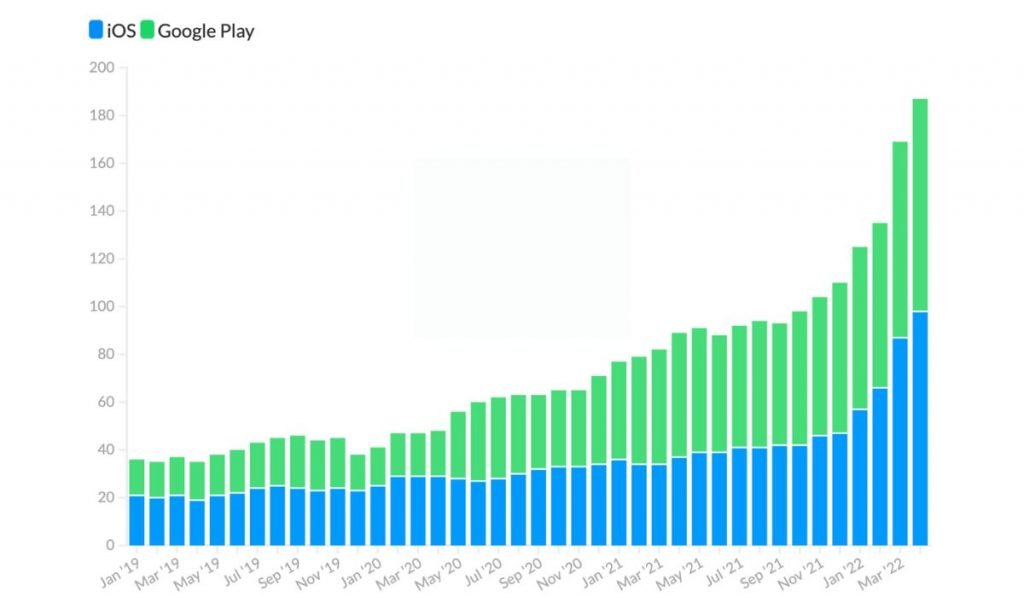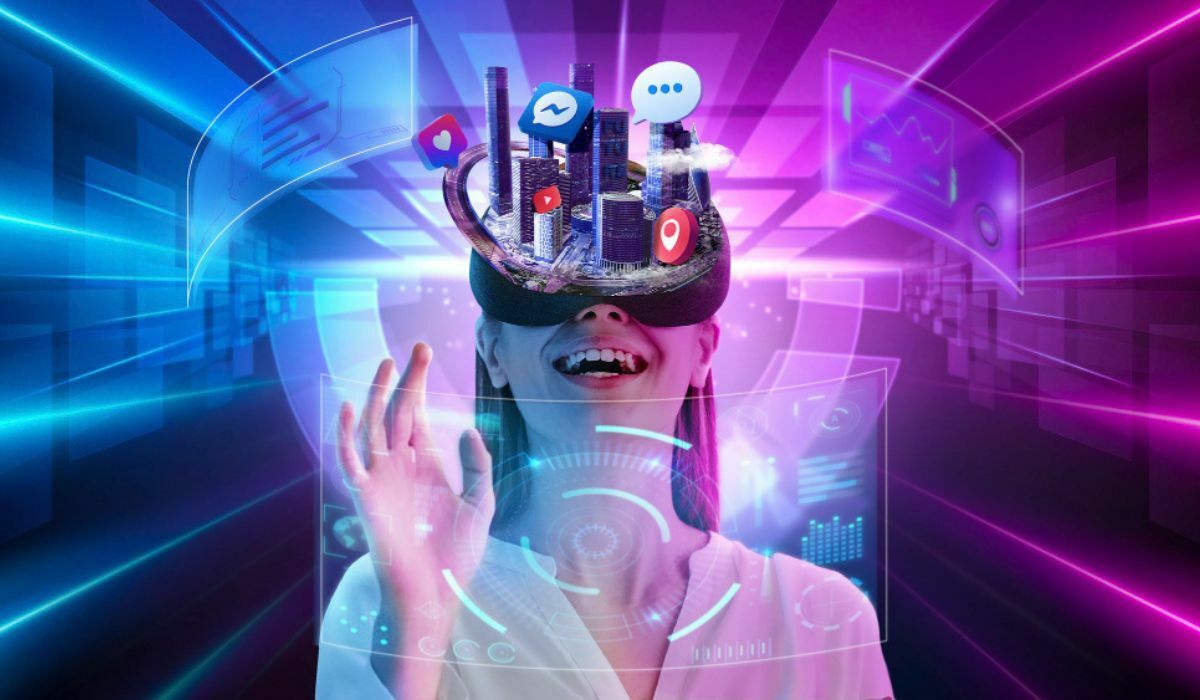At first, I was told that Web3 and Metaverse were the same. I think this has happened to you too. But don’t worry, I read 50+ articles and watched 6+ videos to better understand Web3 and the metaverse. Here I am writing all my answers, which will clear your doubts too. Let’s begin with Web3 first.
You can also go through: Top Web3 Development Companies
What Is Web3?
Web3 refers to the third generation of the World Wide Web, which is focused on using decentralized technologies such as blockchain and peer-to-peer networks to create a more open and secure internet. Web3 technologies have the potential to enable more decentralized and user-controlled online experiences, as well as new types of applications and services.
Also check the list of Web3 Game Development Firms.
What are the components of Web3?
Web3 is a broad term that encompasses a range of decentralized technologies and concepts. Some of the key components of web3 include:
- Blockchain: A blockchain is a decentralized, distributed database that is used to store and validate transactions. In the context of web3, blockchain technology is often used to create decentralized applications (dApps) and enable secure and transparent transactions between users.
- Smart contracts: Smart contracts are self-executing contracts with the terms of the agreement between buyers and sellers being directly written into lines of code. They are often used in conjunction with blockchain technology to facilitate transactions and interactions between users in a secure and transparent manner.
- Cryptocurrency: Cryptocurrency is a digital asset that uses cryptography for security and is decentralized, meaning it is not controlled by any central authority such as a bank or government. Cryptocurrencies can be used as a means of exchange within web3 applications and can also be used to facilitate transactions and interactions between users.
- Peer-to-peer networks: Peer-to-peer (P2P) networks are decentralized networks in which users can connect directly with each other, rather than going through a central server. P2P networks can be used to facilitate decentralized communication and data sharing within web3 applications.
- Decentralized storage: Decentralized storage refers to the use of distributed networks to store data, rather than relying on central servers. Decentralized storage can be used to create more secure and resilient web3 applications, as it reduces the risk of data being lost or compromised due to a single point of failure.

These are just a few examples of the technologies and concepts that are commonly associated with web3. There are many other components of web3, and the field is constantly evolving as new technologies and ideas are developed.
What is Metaverse?
The metaverse is a term used to describe a shared virtual space where users can interact with each other and with virtual objects and environments. It is often described as a “virtual reality” or “virtual world” that exists within the internet. The metaverse is often seen as a potential future development of the internet, where users can participate in immersive and interactive experiences that blur the lines between the physical and digital worlds.
Also check what is Metaverse Marketing?
What Constitutes Metaverse?
The term “metaverse” is often used to describe a shared virtual space where users can interact with each other and with virtual objects and environments. In general, the metaverse is seen as a potential future development of the internet, where users can participate in immersive and interactive experiences that blur the lines between the physical and digital worlds.
There are a few key components that are often associated with the metaverse:
- Virtual environments: The metaverse is typically made up of a number of virtual environments or “worlds” in which users can interact and participate. These environments can be based on real-world locations or be completely fictional, and they can range in size and complexity from simple rooms to entire virtual worlds.
- Virtual objects and assets: The metaverse is often populated with a wide range of virtual objects and assets, such as virtual currency, virtual real estate, virtual art, and virtual clothing and accessories. These objects can have real value to users and can be bought and sold using various forms of payment, including cryptocurrency.
- Virtual avatars: Users of the metaverse typically interact with each other and with the virtual environment using virtual avatars, which are digital representations of themselves or fictional characters. Avatars can be customized by users and can be used to express their identity and personality within the metaverse.
- Social interaction: The metaverse is often seen as a social space, where users can interact with each other in real-time and participate in a wide range of activities and experiences. These interactions can take many forms, including chatting, gaming, and participating in virtual events and communities.
Overall, the metaverse is a complex and dynamic virtual space that is constantly evolving as new technologies and ideas are developed. It has the potential to offer users a wide range of immersive and interactive experiences, and it is likely that we will see more and more examples of the metaverse in the coming years.
Also, check the well-segregated list of Metaverse Development Companies.
How Web3 And Metaverse Are Related?
Now that we have a basic understanding of these terms, let’s dive deeper into the ways in which web3 technologies and the metaverse intersect.
One of the key ways in which web3 technologies can support the development of the metaverse is through the use of decentralized applications (dApps). These are applications that run on decentralized networks and use smart contracts to facilitate transactions and interactions between users. dApps have the potential to enable more decentralized and user-controlled experiences within the metaverse, as they can be built and operated by a wide range of users and organizations without the need for a central authority.
Also read: How to Make Money in the Metaverse?
For example, a dApp could be used to create a virtual marketplace within the metaverse where users can buy and sell virtual goods and services using a decentralized cryptocurrency. Or, it could be used to create a decentralized social media platform where users can interact with each other and with virtual content in a more secure and private manner.
Another way in which Web3 technologies can support the development of the metaverse is through the use of non-fungible tokens (NFTs). These are unique digital assets that are stored on a blockchain and can represent ownership of virtual items or experiences within the metaverse. NFTs have gained a lot of attention in recent years due to their potential to enable the creation of more valuable and immersive experiences within the metaverse, as they can be used to represent rare or exclusive virtual items that have a real value to users.
For example, an NFT could be used to represent ownership of a virtual real estate property within the metaverse, or it could be used to represent ownership of a virtual art piece or collectible. NFTs have the potential to enable new forms of value creation and exchange within the metaverse, and they can be used in conjunction with web3 technologies such as smart contracts to facilitate these transactions.
Overall, web3 technologies and the metaverse have the potential to intersect in many different ways, and it is likely that we will see more and more examples of this in the coming years. As the metaverse continues to evolve and become more prevalent, web3 technologies such as decentralized applications and non-fungible tokens will likely play a key role in enabling more immersive and interactive experiences for users.
Also check the list of Metaverse Game Development Companies
Difference Between Web3 And Metaverse
| Web | Meta |
| A brand-new version of the internet that aims to create a decentralized network where users own and control the resources and assets they create. | A digital environment that combines physical reality with virtual environments. |
| The whole internet can evolve with Web3. | A specific portion of the internet is being transformed with 3d environments. |
| Blockchain based peer to peer network supports Web3. | AR, VR, MR, XR etc. supports Metaverse. |
| Web3 will change the way we use the internet and will increase trust ratio. | The metaverse has the potential to change the way we work, socialize, and do other things online. |
| Real-world human communication is made possible by Web 3’s use of blockchain, ML, and AI. | It applies to peer-to-peer virtual gatherings, 3D medical procedures, and virtual gaming, among other things. |
| Individually owned and regulating internet. | Transforming real-world materials into virtual ones in a virtual world. |
Thanks for reading! Do you have any questions about web3 or the metaverse? Feel free to ask in the comments below.
FAQs Related To Web3 and Metaverse
Web3 is a term used to describe the third generation of web technology, which includes decentralized applications (dApps) and blockchain-based technologies. It enables users to interact with each other directly without relying on centralized intermediaries such as banks or governments. This allows for more secure transactions and greater privacy.
Metaverse is an open source public blockchain platform that provides digital asset registration, identity verification, and value exchange services. It also supports smart contracts and dApps development in order to create a new virtual economy based on digital assets.
Web3 works by connecting users directly through peer-to-peer networks instead of relying on centralized servers or authorities like banks or governments. Compared to older ways of communicating online, this makes transactions happen faster, costs less, security is higher, and privacy is better. Additionally, it enables developers to build decentralized applications (dApps) that can be used by anyone around the world without having to trust any single entity with their data or funds.
Some advantages of using Metaverse include its low-cost transactions due to its use of the Proof-of-Stake consensus mechanism; its support for smart contract development; its ability to issue digital assets; its high scalability; and its user-friendly interface which makes it easy for both developers and non-technical users alike. Additionally, it offers enhanced security features such as multi-signature wallets, which require multiple signatures before a transaction can be completed successfully.
To get started with either Web 3 or the metaverse, you will need an Ethereum wallet address where you can store your cryptocurrency tokens such as ETH or ERC-20 tokens issued on the network. You will then need access to a node running either Geth (for Ethereum) or Parity (for Ethereum Classic). Once connected you will be able to interact with the network via commands sent from your wallet address in order to send transactions, deploy smart contracts, etc.










Leave a Reply